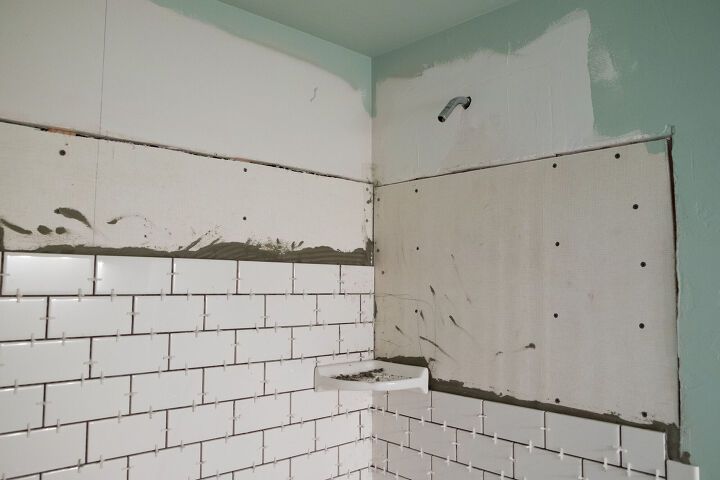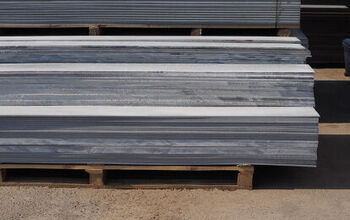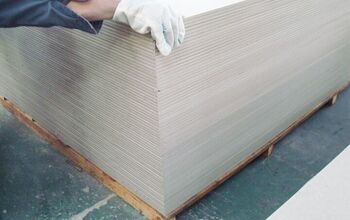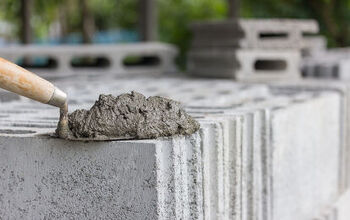Kerdi Board Vs. Cement Board: What Are The Major Differences?

A successful tile installation largely depends on the substrate that the tile is attached to. Whether you’re installing tile on a floor, wall, or countertop, choosing the right type of substrate, or underlayment, is critical to preventing breaks and cracks in both the tile and the grout. Porcelain and ceramic tiles are stiff and hard materials, so if they are installed on an unlevel or bouncy surface they are highly susceptible to cracking.
With so many different types of underlayment to choose from, it can be hard to decide which is best for your project. As such, many homeowners and professionals find themselves wondering whether Kerdi Board or cement board is the better tile substrate.
Both Kerdi Board and cement board are designed to smooth out uneven spots on the installation surface, create an unbending layer that won’t flex underfoot, and also provide a waterproof barrier. Though, each product comes with its own individual characteristics, and pros and cons.
With that said, let’s take a look at the importance of choosing the right tile substrate, the options you have, and which tile underlayment material you should choose – Kerdi Board or cement board?
Do You Need to Hire Tile Installers?
Get free, zero-commitment quotes from pro contractors near you.

Understanding Tile Underlayment
To put things into perspective, consider that a tile floor is made up of three layers: the subfloor, the underlayment, and the tile surface you walk on. There are many different types of underlayment to choose from, but they all serve the same purpose. Underlayment is designed to smooth out uneven areas of the subfloor and form a rigid layer that prevents the flooring from bending.
Without an underlayment, even the slightest movement of the subfloor can result in cracking of the tile and crumbling of the grout lines. A quality underlayment will also serve as a waterproof barrier between the subfloor and the tile surface.
How to Choose the Right Tile Underlayment
In order to determine which tile underlayment is right for your project, you need to know which issue you’re trying to solve – whether it’s preventing subfloor cracks from transferring to the tile, soundproofing, moisture protection, or providing more rigidity to the tile. When it comes to tile underlayment, your options can be categorized into three main classifications, each suitable for different tiling circumstances:
- Sheet-type, commonly known as backer board or cement board. It is applied on a wood subfloor to limit deflection, resulting in a floor that is more rigid and better suited for tile installation.
- Liquid or semi-liquid products, applied using a roller or a trowel to help with crack prevention. It requires between four and six hours to dry and an additional eight to 12 before you can install the tile.
- Membranes, which are available in flexible sheets and also address crack prevention. These peel and stick membranes allow you to apply the tile immediately over top. If applied correctly, most products have a lifetime warranty. You can also use membranes on a second floor of your home for sound absorption.
Although cement board is the most commonly used underlayment for tile, Kerdi board is growing in popularity as a multifunctional tile substrate.
What is Cement Board?
Cement board is the industry standard when it comes to tile substrates and the most preferred among professionals when installing porcelain or ceramic tile. It is also widely available and a relatively inexpensive option – approximately $10 for a 3-foot by 5-foot sheet. The boards come in three-foot by five-foot and four-foot by eight-foot panels, sized for efficient use in bathrooms.
Installing cement board involves placing the boards atop a layer of thinset adhesive, a process known as bedding. An extra layer of thinset is then added to the surface of the cement board to adhere the tiles in place. This is a very effective and popular method of installing tile, and one that ensures the tile doesn’t crack.
The cement board core itself is not waterproof, but it can withstand water without falling apart. This means that even if your waterproofing system leaks, the cement board will remain intact. The major drawback to cement boards is their weight, as they are incredibly heavy and can be difficult to cut. If you’re not careful, the boards can also leave behind abrasive sandy crumbs that can cause damage to your shower base or tub.
Regardless, cement board is a great, trusted tile substrate that will work well on both walls and floors. Keep in mind, that, just to be safe, most professionals choose to install a waterproofing membrane on top of the cement board when installing in wet locations like tub surrounds or showers.
What is Kerdi Board?
Manufactured by Schluter Systems, Kerdi Board is a multifunctional tile underlayment and construction panel, that can also be implemented for forming bonded waterproof assemblies with tile coverings. The product involves an extruded polystyrene foam panel, with specialized reinforcement materials on both sides. It also features fleece webbing that allows for effective anchoring into thin-set mortar.
When installed, Kerdi Board creates a substrate that is level, flat, square, plumb, and dimensionally stable. So long as the seams and joint areas are properly prepared, the panels can also provide waterproofing. This makes Kerdi Board suitable for a wide variety of interior applications, including kitchen countertops.
Kerdi Board panels have a number of other advantages: they can be cut to size using an ordinary utility knife, can be glued or screwed into place, and are very lightweight. The grid lines on the surface are incredibly helpful for installation and making neat cuts. Their lighter weight makes moving panels around during installation a cinch, which is a far cry from the heft of conventional cement board. With that said, the key benefits of Kerdi Board include:
- The panel surfaces are even, providing exceptional structural rigidity.
- The foam core surrounded by synthetic cloth on both sides and adhered with resin glue is comparable to products used in the high end boating industry.
- The panels are stable and won’t deteriorate when exposed to moisture.
- The printed grids on the surface make cutting and installation easier.
- They can be installed on any type of support and can even be used to create partitions, with no structural support required.
- Can be cut to size easily using a utility knife.
- Lightweight and easy to move and transport.
- The surface is ready-made for mortar application.
Kerdi Board vs. Cement Board
While cement board may be the most common and widely-known tile substrate, Kerdi Board is giving it a run for its money. Both may be effective substrates, but Kerdi Board boasts significant advantages. One of the major benefits of opting for Kerdi Board over cement board is the ease of installation. The gridlines printed on the surface are beneficial for the installation process, also allowing for quick, neat cuts with a utility knife.
Kerdi Board is also significantly lighter in terms of weight than cement board, meaning they can be transported and lifted into place with ease – evening hauling five panels at a time should be no problem. Cement board is known to be very heavy and somewhat difficult to cut. While cement board is a reliable tile underlayment, it isn’t completely waterproof – only water-resistant.
With Kerdi Board you get to enjoy an effective product that is lightweight, easy to cut, waterproof, and leaves behind no dust! Not to mention, it’s warrantied by Schluter, giving you the ultimate peace of mind.
Do You Need to Hire Tile Installers?
Get free, zero-commitment quotes from pro contractors near you.

Related Questions
Do you need to install a vapor barrier behind Kerdi Board?
No, you do not need to install a vapor barrier, as Kerdi Board is the vapor barrier. While cement board and grout are not waterproof, Kerdi is and can even be directly installed over drywall.
Can you use Kerdi Board on shower floors?
Kerdi Board is suitable for a number of interior applications. It allows you to easily and quickly create tile-ready elements in bathtub surrounds and platforms, vanities, showers, shelving, and much more.

Jessica considers herself a home improvement and design enthusiast. She grew up surrounded by constant home improvement projects and owes most of what she knows to helping her dad renovate her childhood home. Being a Los Angeles resident, Jessica spends a lot of her time looking for her next DIY project and sharing her love for home design.
More by Jessica Stone



























